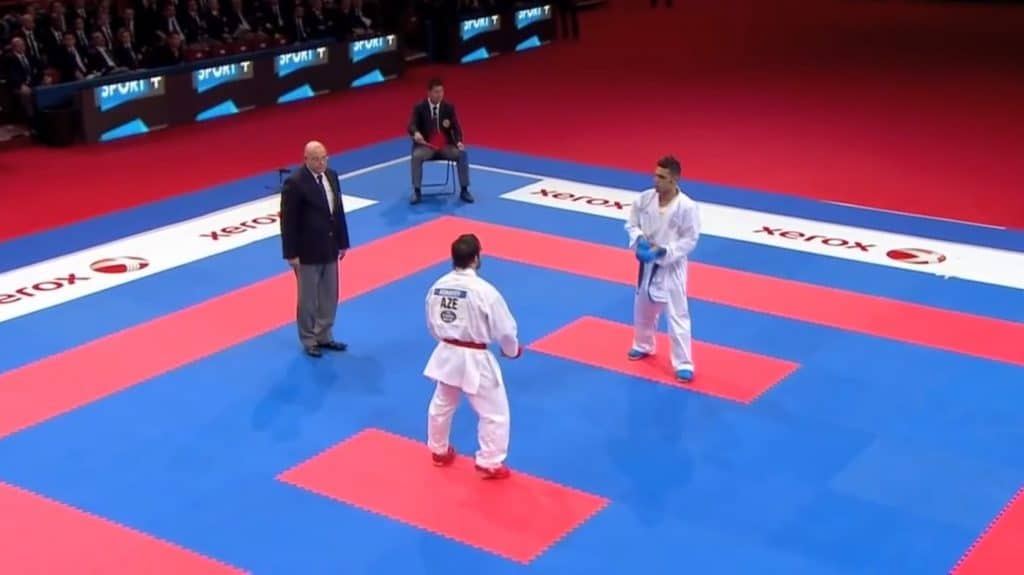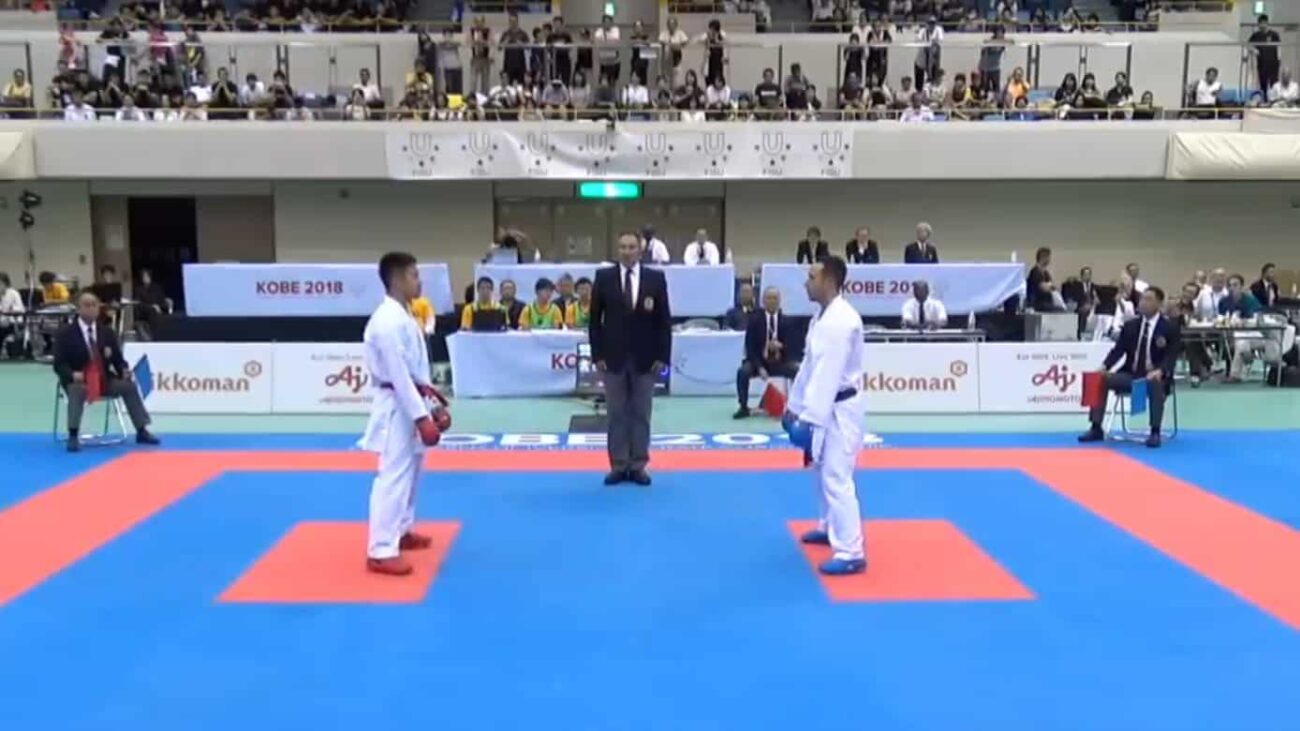Most Oriental martial arts, although unified by the head international organisations, have different styles that are taught and practiced around the world. The styles are sometimes called schools, but the latter is also used to describe individual clubs, so we’ll refer to these different teachings as styles.
The four main karate styles are Shōtōkan, Wadō-ryū, Shitō-ryū, and Gōjū-ryū. There are ten more karate styles derivated from the four main ones. Those are Chitō-ryū, Gosoku-ryū, Isshin-ryū, Kyokushin, Shūkōkai, Shindō jinen-ryū, Shōrin-ryū, Shuri-ryū, Uechi-ryū, and Yōshūkai.
The styles are a result of the historical development of a martial art. Namely, Oriental martial arts are, as a rule, several centuries old and each teacher tried to contribute to the art and develop it in a specific way. That resulted in different approaches attracting followers and, ultimately, becoming individual styles.
Styles aren’t separate arts, they are just variations of the basic rule that tend to focus more on one aspect or the other, adding something new and specific along the way. Of course, modern martial arts are, generally, unified and the styles are just different approaches under the same ruleset, but it’s still interesting to analyse them.
In today’s article, we are going to analyse the 14 styles of modern karate. We’re not going to dwell into each of them in depth, but we are going to give you the basics elements, origins and focuses of each of them.
Understanding the different styles of Karate is indeed fascinating and enriching, but it is equally critical to be properly armed during practice. If you’re engrossed with the styles and techniques described here, you’ll absolutely appreciate our comprehensive guide to the Best Karate Sparring Gloves 2024. Take your training to the next level while prioritizing your safety.
History of Karate Styles
Among the 14 styles, four of them are considered to be basic, with the other 10 being derivations of the basic four, but with the addition of other influences. The major influences for the basic group – Shōtōkan, Wadō-ryū, Shitō-ryū and Gōjū-ryū – were martial art styles from the island of Okinawa, with some external influences, mostly from mainland China.
Okinawa is a very important location in the history of Japanese martial arts, as its indigenous people established a lot of predecessors of modern martial arts. Okinawan martial arts are divided into three groups, based on the location they were centred in, and they are – Shuri-te (centred around the capital of Shuri), Tomari-te (centred around the village of Tomari) and Naha-te (centred around the city of Naha). Each of these groups had several specific styles and all of them had a strong influence on the development of modern karate.
Shuri-te and Naha-te styles are very different and have different predecessor influences. The former is usually described as a harder martial arts style, while the latter utilises softer techniques. Tomari-te is usually regarded as a blend of the two that utilises both hard and soft elements.
As for the external influences, some noteworthy examples are jujutsu, kung fu and Fujian White Crane.

Karate Styles and Their Differences
Now we shall give a brief overview of the four major karate styles:
- Shōtōkan (Japanese: 松濤館) is one of the four basic karate styles. It originated on the main Japanese islands and although it was influenced by Okinawan martial arts, its main influences were styles separate from the three above-mentioned ones. The fundamental influences for Shōtōkan were Shōrin-ryū and Shōrei-ryū. About 70% of this style’s techniques are considered to be hard, while the soft ones take up around 30%. Beginner stances are usually deeper, while more advanced ones tend to be longer. It has a total of 26 kata.
- Wadō-ryū (Japanese: 和道流) is the second of the four basic karate styles. It originates simultaneously in Japan and the island of Okinawa and was primarily influenced by the Tomari-te group of Okinawa, the Shindō Yōshin school of jujutsu and the Shōtōkan style of karate. It utilises a combination of both hard and soft techniques, with a focus on the latter ones. The stances are mainly natural. This style has 15 kata in total.
- Shitō-ryū (Japanese: 糸東流) is the third basic karate style. As the former, it also simultaneously developed in Japan and the island of Okinawa, but it had very different influences. The Shuri-te and Naha-te groups were the chief influences of this style, which is combines both hard and soft techniques. The stances deep and natural. This style has the largest number of kata – 94.
- Gōjū-ryū (Japanese: 剛柔流), the last of the basic styles, originated, interestingly, on the island of Okinawa. It was influenced by the Naha-te group and the Chinese martial art called Fujian White Crane. It also utilises both types of techniques and a combination of deep and natural stances. Its kata total is 12.
Now that we have described the four basic styles, we will give an outline of the 10 derived styles, as follows:
- Chitō-ryū (Japanese: 千唐流) also originated on Okinawa and is one of the derived styles of karate. It was primarily influence by the Naha-te group, but also the Shōrin-ryū and Shōrei-ryū schools, just like Shōtōkan. It utilises both styles of techniques, but focuses more on the softer ones. The stances are exclusively natural. The total number of kata is 15, not including some special ones.
- Gosoku-ryū (Japanese: 剛速流) is a Japan-based combination of Shōtōkan and Gōjū-ryū. It uses both types of techniques and has deeper stances for beginners and natural ones for more advanced users. It has a substantially large amount of kata – 46, including several weapons kata.
- Isshin-ryū (Japanese: 一心流) was established on Okinawa as a larger blend of Gōjū-ryū, Shōrin-ryū and Kobudō, a special Okinawan martial art. It uses both types, with an emphasis on hard and fast ones. The stances are all natural and the number of kata is 15, including weapons kata.
- Kyokushin (Japanese: 極真会館) was established in Japan. It is, like Gosoku-ryū, a combination of Shōtōkan and Gōjū-ryū. Its techniques are described as extremely hard, while its stances are natural. It has 23 kata and an additional 8 ura kata.
- Shūkōkai (Japanese: 修交会) is also Japan-based and is a combination of Gōjū-ryū and Shitō-ryū. It mostly uses hard techniques (60%), but also has softer ones (40%). The stances are always natural. The total number of kata is 44.
- Shindō jinen-ryū (Japanese: 神道自然流) was simultaneously founded in Japan and on Okinawa. Its primary influence was the Shuri-te group, but it also has influences from Naha-te and Tomari-te. It uses both technique styles and interchanges between deep and natural stances. If all the kata types and subtypes are counted, it has more than 60 in total.
- Shōrin-ryū (Japanese: 少林流) is an old Okinawan karate style, established as a combination of Shuri-te and Tomari-te styles, along with influence from various Chinese martial arts. The techniques are primarily fast and hard, but soft ones are also allowed. The stances are always natural, while the kata number is 21.
- Shuri-ryū (Japanese: 首里流) was founded on the island od Okinawa. Its influences come from the Shuri-te group and the Chinese martial art called Xing Yi Quan. It uses both techniques and a combination of deep and natural stances. It has a total of 15 kata.
- Uechi-ryū (Japanese: 上地流) is also Okinawa-based and is a combination of the Naha-te group styles and the Pangai-noon style of kung fu. It equally balances between hard and soft types of techniques and the stances are mainly natural. It has just 8 kata, the least of all the styles.
- Yōshūkai (Japanese: 養秀会) stems from Japan and Okinawa and is actually a derivation of the Chitō-ryū style. It mostly uses hard techniques (60%), but also has softer ones (40%). Beginners start of with deeper stances, while more advanced karateka use natural stances. It has a total of 18 kata.
Conclusion
In this article, we have briefly analysed the 14 main styles of karate as they are present in the philosophy of this martial art. If you’re wondering which of them is best, the answer, we think, depends on you and how you want to perceive the sport. Each style offers something of its own and you have to decide for yourself what you want to focus on and chose a style that fits you best. The most important thing is that you keep learning and working hard.
If you are interested in our series of articles on karate, be sure to check them out.
And, of course, keep following for more information on martial arts. See you next time!

